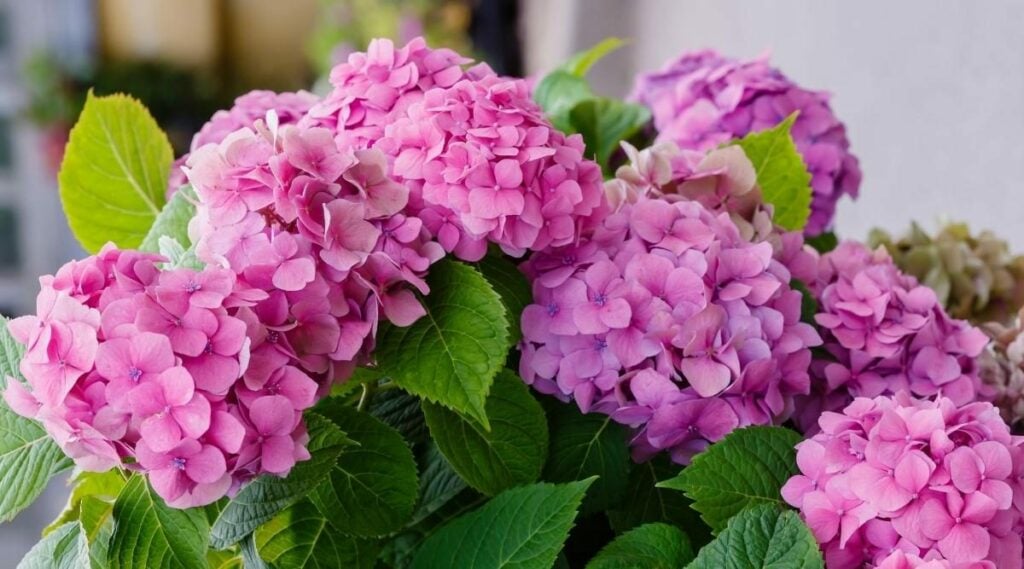In the world of shrubs, hydrangeas are unmatched for their exquisite blossoms. These beautiful plants are simple to grow, adaptable to most soil types, and have an abundance of blossoms. Clear blue, vivid pink, icy white, lavender, and rose flowers all tempt us with their colors, but what makes them that way?
Generally speaking, blue or lavender-blue hydrangea flowers are produced by acidic soil with a pH lower than 6.0. Pinks and reds are encouraged by alkaline soil, which has a pH above 7.0. The blossoms turn purple or bluish-pink at a pH of 6 to 7.
Altering the Color of a Hydrangea
Lacecap and mophead hydrangeas can change color, unlike the majority of flowers. The first people to observe this were gardeners in the eighteenth century, who experimented by burying rusty nails, pouring tea around their plants, or even chanting spells.
However, the pH of the soil determines flower color, specifically, whether or not the hydrangeas absorb aluminum from the soil. If the flowers are pink, the plant is getting aluminum. If they’re blue, it’s not. You can control the color by adjusting the pH.
Blue or lavender-blue hydrangea blooms are usually produced by acidic soil with a pH of less than 6.0. Pinks and reds thrive in alkaline soil or soil with a pH above 7.0. The blossoms turn purple or bluish-pink when the pH is between 6 and 7.
Add garden sulfur or aluminum sulfate to your soil to lower the pH. To raise the pH, use ground lime.
We may need to reapply the garden sulfur or lime several times, and the results may take several months. Be satisfied if the color remains the same. Some varieties are resistant to change, such as white hydrangeas. (Source: HGTV)
How is Using Coffee Grounds Beneficial?
Some gardeners claim to have successfully turned their hydrangeas blue by incorporating coffee grounds into the soil. The coffee grounds acidify the soil, allowing the hydrangea to absorb aluminum more easily. Fruit peels, grass clippings, peat moss, and pine needles are also thought to have a similar effect. (Source: Garden Design)
Can Eggshells Also Be Used?
Crushed eggshells could be a good way to get pink hydrangeas. Eggshells will gradually degrade and reduce the acidity of your soil, making it more difficult for hydrangeas to absorb aluminum. (Source: Garden Design)
Blue Hydrangeas with Vinegar?
Many gardeners add vinegar to their watering can to increase soil acidity and turn their hydrangeas blue. However, Hydrangea Blue, a liquid fertilizer that produces blue flowers, is likely to produce better results. (Source: Garden Design)
Where is the Ideal Place to Plant Hydrangeas?
The best location is one that gets morning sun and afternoon shade. They can withstand more sun if you live further north with possibly full sun all day.
Consider the mature size, and give it plenty of room to grow. Select a location with good drainage. If necessary, add compost to the soil. Planting beneath a tree is not recommended because root competition and a lack of sunlight prevent it from thriving. Avoid planting in exposed areas where strong winds could snap stems. (Source: Garden Design)
Image from All About Gardening
